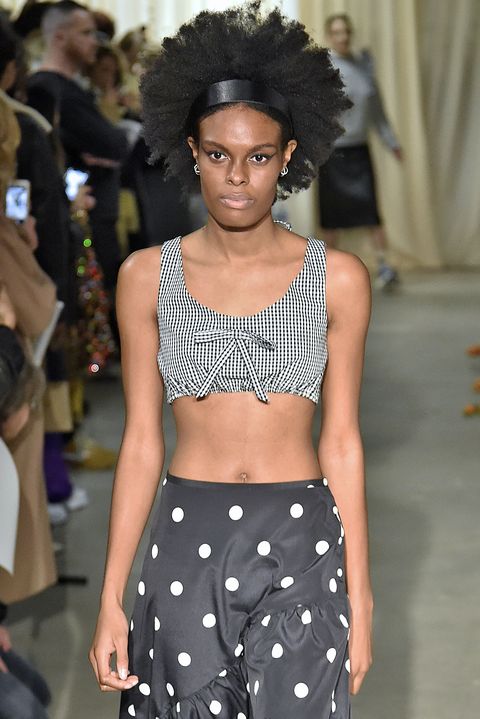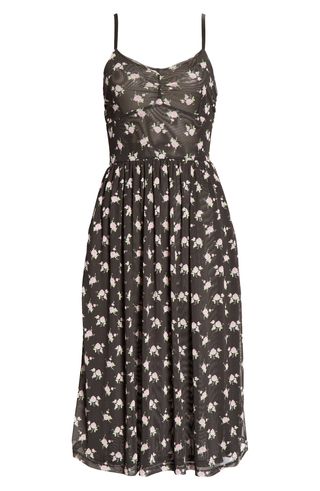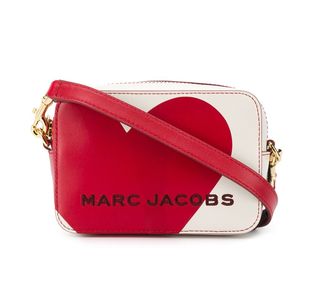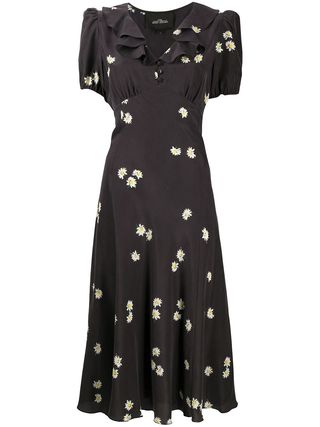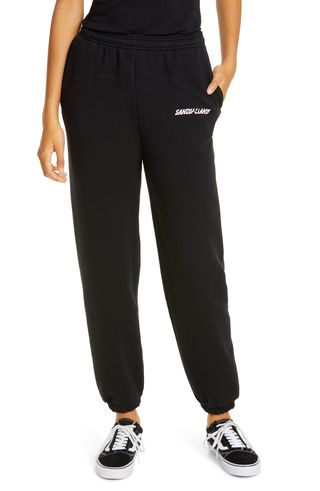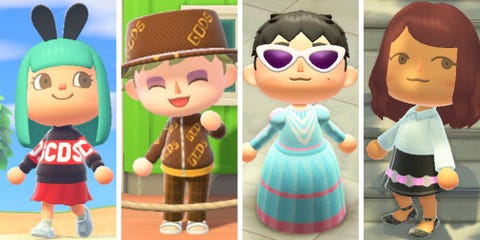
Left: Courtesy of GCDS; Right: Courtesy of Marc Jacobs, @animalcrossingfashionarchive and Kara Chung
On a recent weekend, the designer Sandy Liang—the downtown darling known for her “clout fleece”—held an extremely exclusive pop-up sale. Only six people were allowed in at a time, with some attendees waiting in line for two hours.
Before you panic about the potential social distancing violations involved, know that this sale took place on a completely virtual plane: an island in the video game Animal Crossing. Says Paige Rubin, the head luxury buyer at What Goes Around Comes Around and a friend of Liang’s who helped her organize the sale: “Someone commented on Sandy’s Instagram, ‘Harder to get into than a Supreme drop.’” The waiting list swelled to almost 100 people at one point.
Liang is not the only designer to make inroads into Animal Crossing: its soft, cute, edgeless Richard Scarry-esque world has become, somewhat incongruously, a crucible for avant-garde fashion. Three creative New Yorkers—model Fernanda Ly, graphic designer/photographer Vivian Loh, and DJ/designer Michele Yue—make fanciful virtual versions of Cecilie Bahnsen and Y-Project runway looks, showcased on their Instagram account, Nook Street Market. Theirs is just one of many accounts devoted to showcasing fashion on the site, the more outré the better. “I always collect and wear the weirdest accessories in video games,” explains Ly, “and Animal Crossing is no different. It’s all about realizing the fantasy and wearing or doing what isn’t normally possible.”
Another popular account, Animal Crossing Fashion Archive, recently collaborated with Valentino on 20 custom looks, and unveiled 6 pieces from Marc Jacobs’s line The Marc Jacobs that can be worn during gameplay. The account also recently worked on pieces with the Italian streetwear brand GCDS.
Meanwhile, players of the video game Fortnite, where Travis Scott performed a concert the same weekend as Liang’s sale, have bought items like limited-edition Jordans that exist in the world of the game. The world of digital fashion and dressing avatars has been a presence for years at this point, but it feels like with the advent of social isolation, it became a real part of many people’s lives—and a way to interact with fashion when we can’t always access it IRL.
The cannabis lifestyle publication Gossamer recently collaborated with the “inactivewear” fashion label Offhours on a housecoat called the Dogwalker, described as “like wearing an edible” on Gossamer’s e-commerce site. That piece is now sold out, but the two brands worked with Nook Street Market to create a virtual version. This is, after all, “a time where people are feeling left out and like they can’t access the things they would like to access, whether that’s social contact or even the outside world,” says Gossamer co-founder Verena von Pfetten. “If you can’t have it in real life, you can now have it in the digital world.” At its best, that can mean that people can take more fashion risks than they would in your typical business-casual office. “It becomes a kind of free fashion, as opposed to socially expected fashion,” says Valerie Steele, the director and chief curator of The Museum at FIT. “What if you didn’t care what your colleagues thought?”
It also raises the question of how fashion brands sell clothing right now when clothing is, for many brands, not being produced, and maybe not being bought. As we lose the contours of actual in-person interaction with people and objects, fashion brands are finding more intangible ways to represent themselves: some have launched podcasts, Spotify channels, and Instagram Live performances as a way to help their customers stay connected with them. For a young talent like Liang, the Animal Crossing sale was a way to interact with her customers. “So many people came dressed in Sandy creations they had made themselves,” says Rubin, or took “selfies” with Liang.
We’re already seeing digital fashion weeks come to fruition: they’ve taken place in Shanghai and Moscow and soon London. Livestreamed shows and virtual influencers like Lil Miquela are already ho-hum elements in the industry, and now virtual shows may become just as routine. When Fashion Month rolls around in the fall, it’s hard to imagine it wouldn’t involve at least some virtual elements.
We may start living more digitally in other ways when it comes to style, too. While much of video-game fashion is still free, at some point people may be willing to spend real money to dress their non-corporeal selves. After all, fashion still serves the same function online as it does off: to express yourself, to convey status, or simply to experiment and have fun. Steele imagines a future where you buy digital clothing to “wear” on your Zoom meetings—think of it as the next level up from having a custom Zoom background.
“I think it will continue after things get back to quote-unquote normal,” she says of the newfound mainstream-ness of the trend. “It’s obviously pushing some people’s buttons, even though it’s not clear psychologically what exactly it’s doing, but people are getting something out of it.”
Adds Von Pfetten of fashion infiltrating the sylvan fields of Animal Crossing, “It adds an uncanny-valley-in-a-good-way dimension to it. All bets are off, so why not wear a Vivienne Westwood piece to farm your turnips?”

